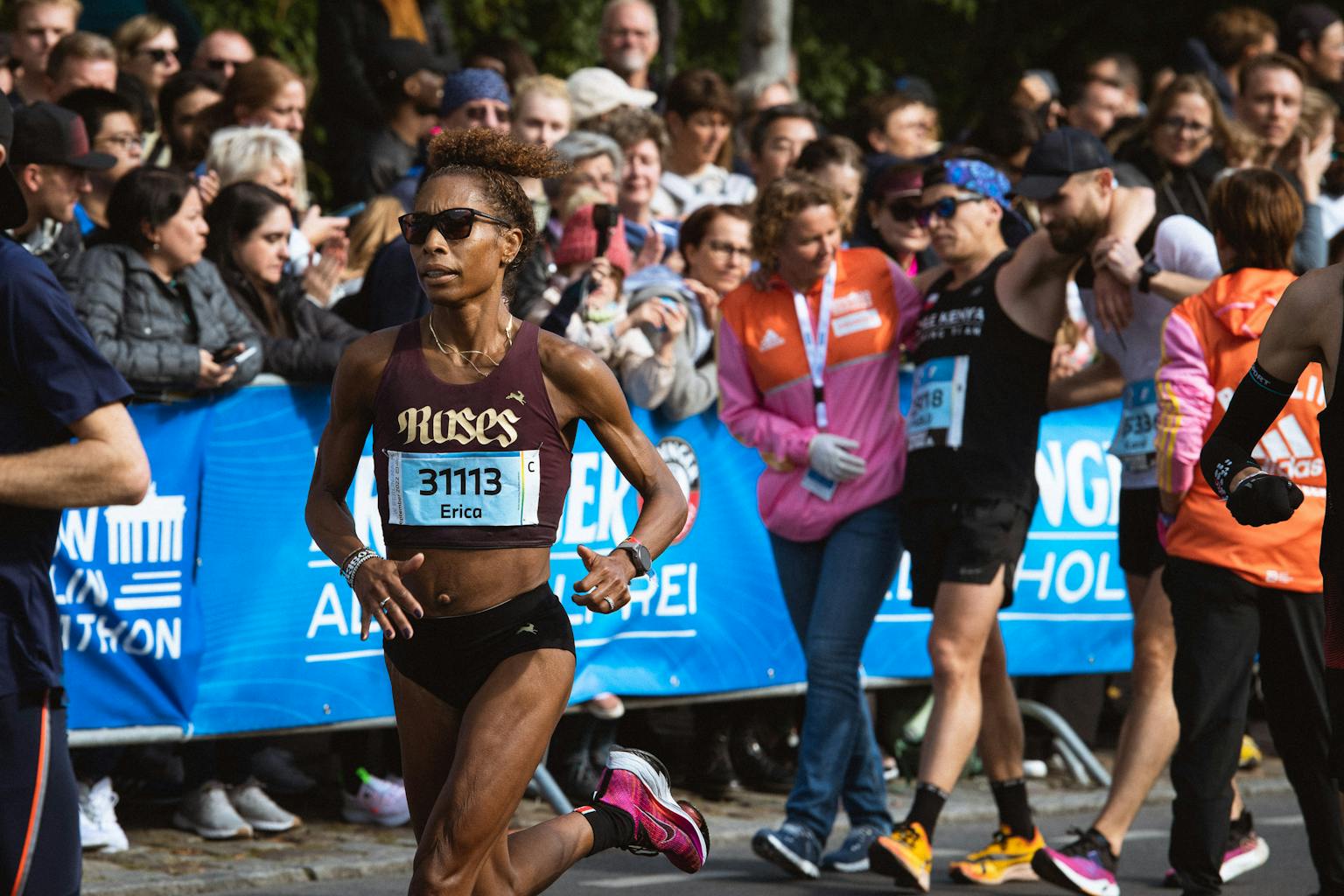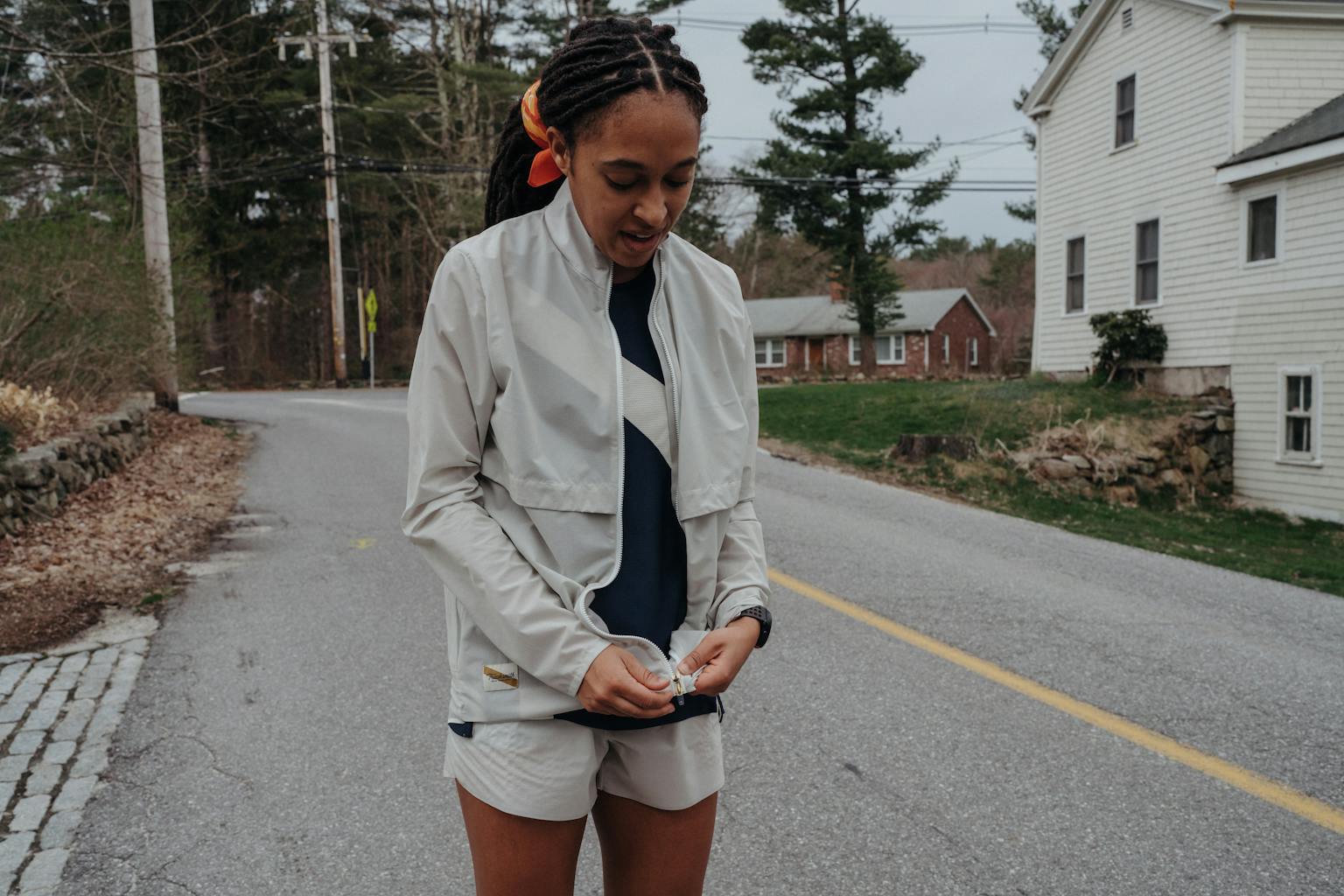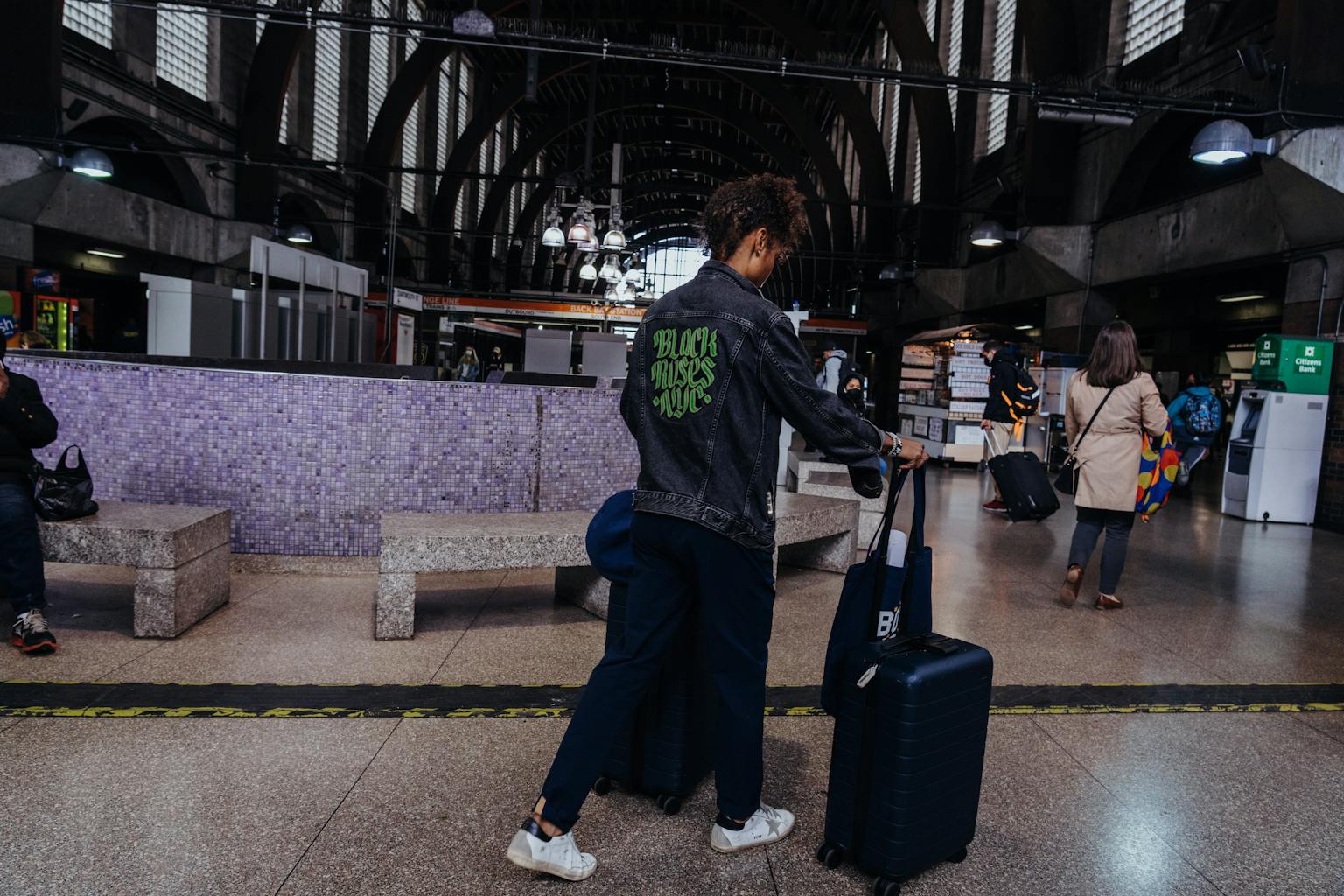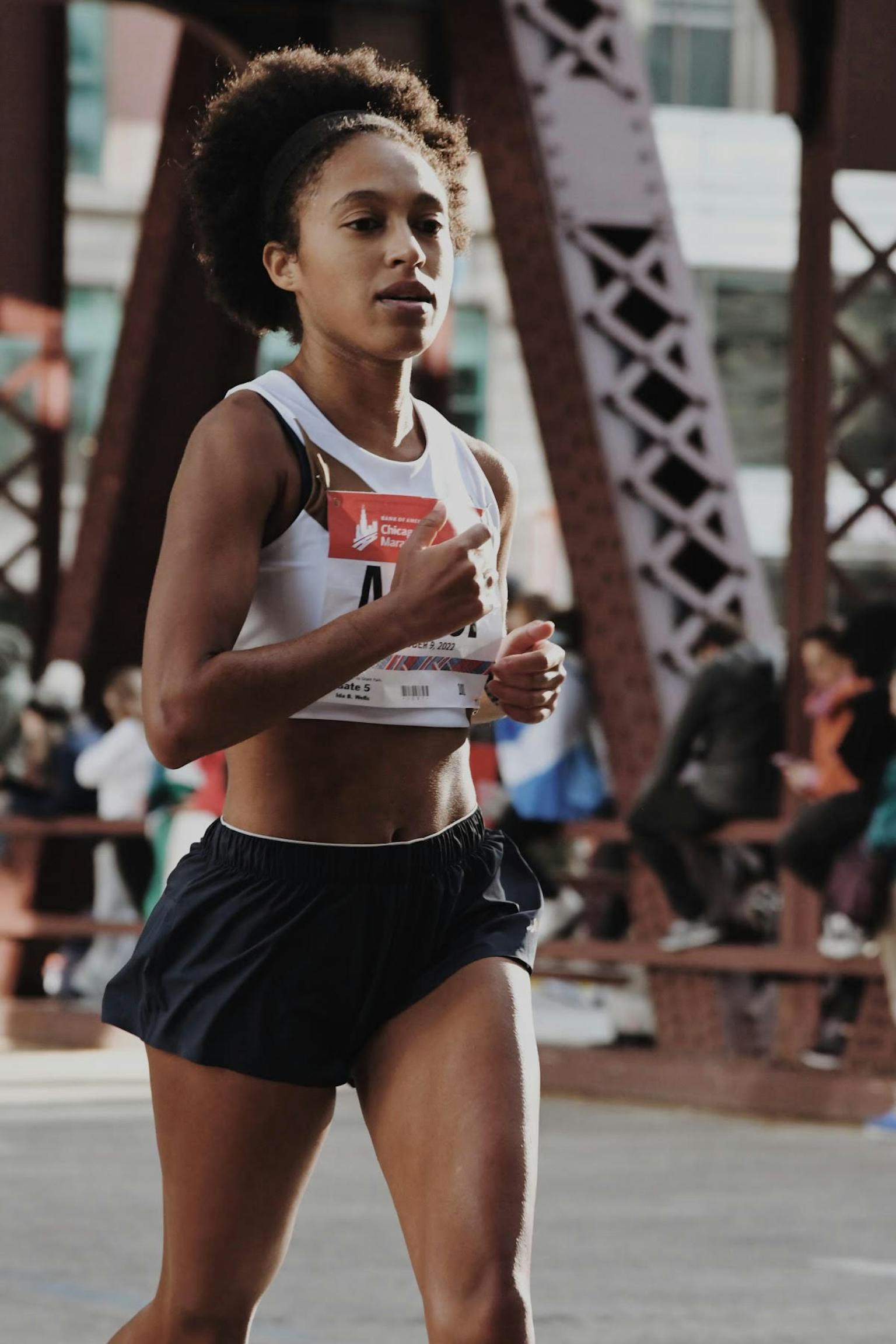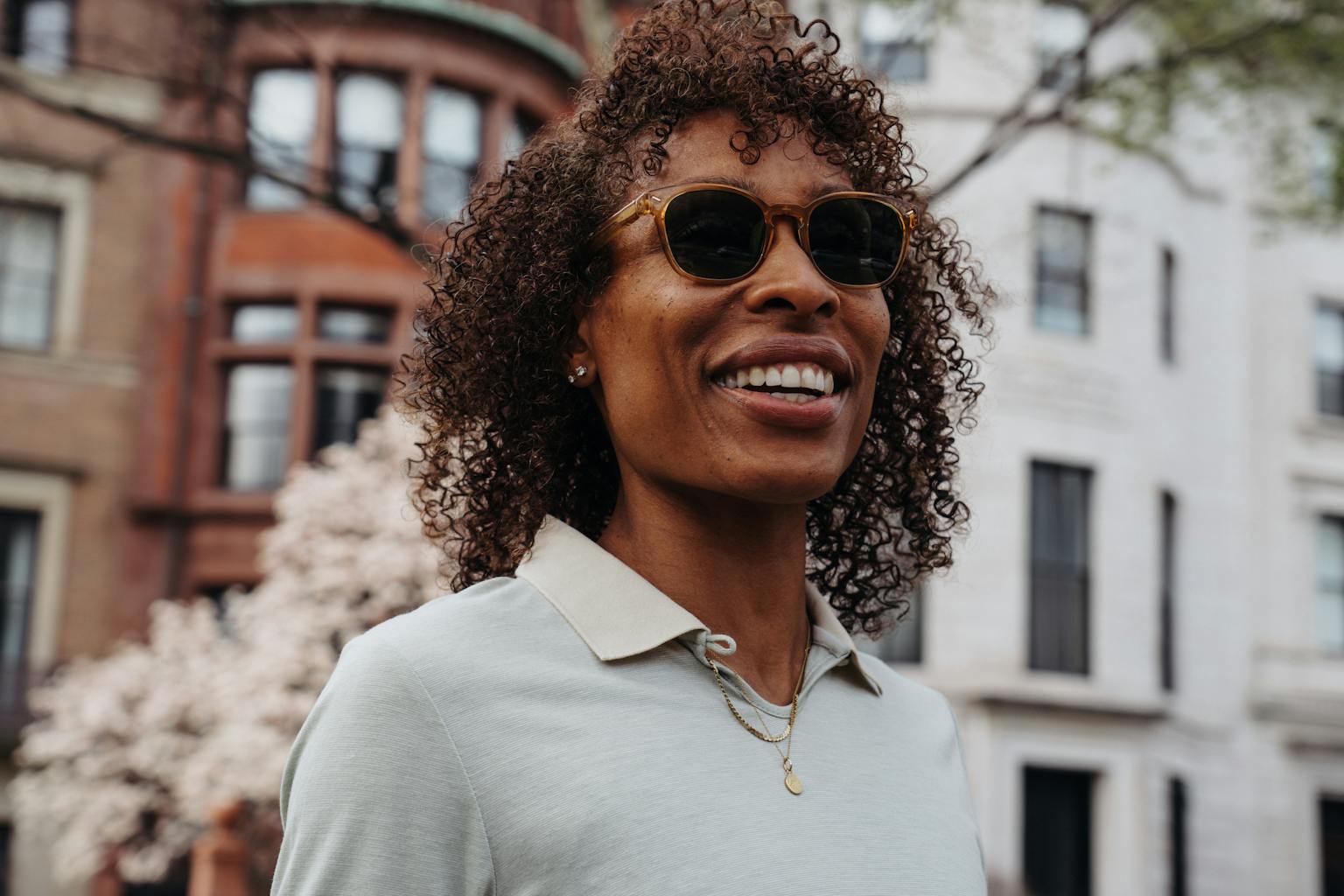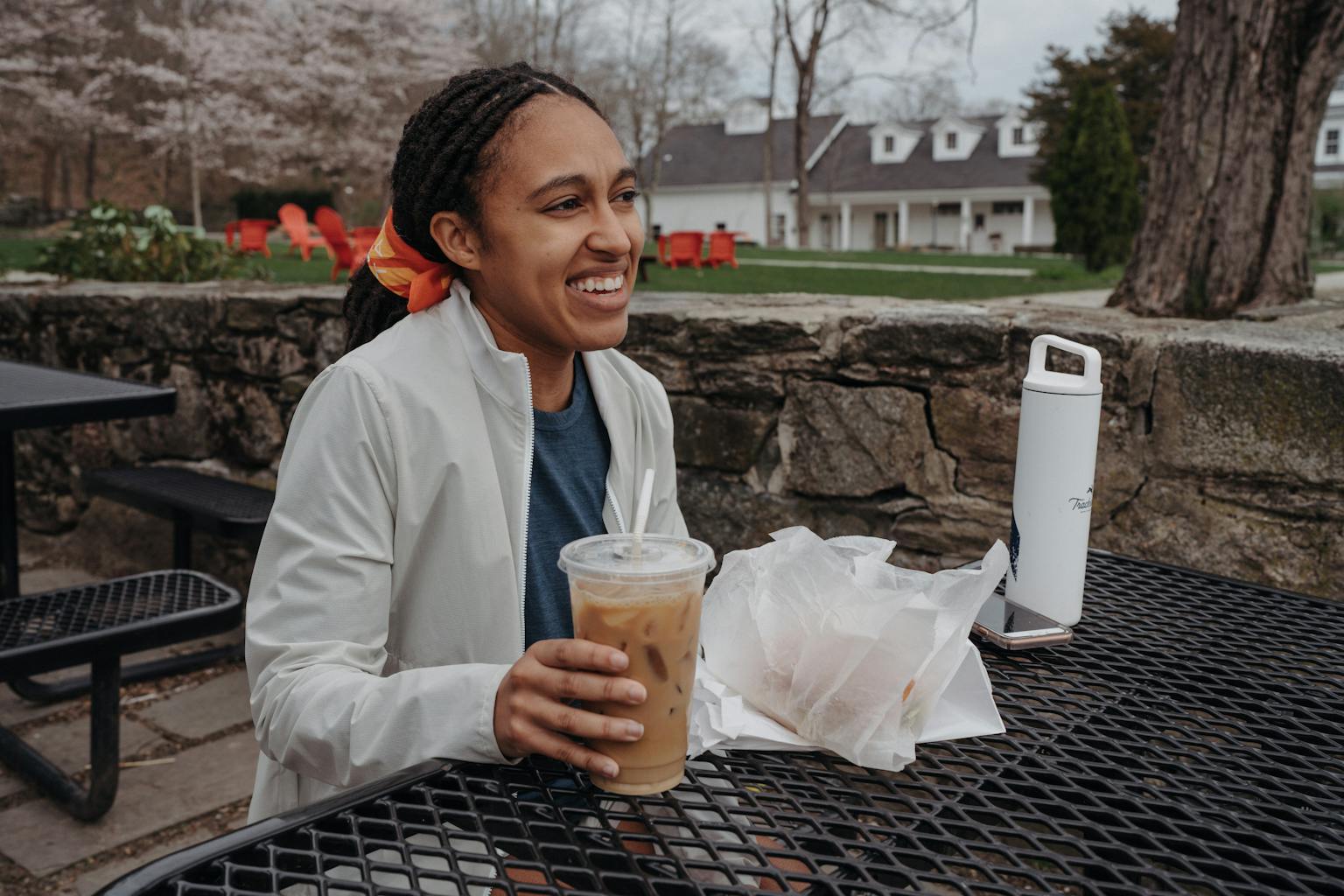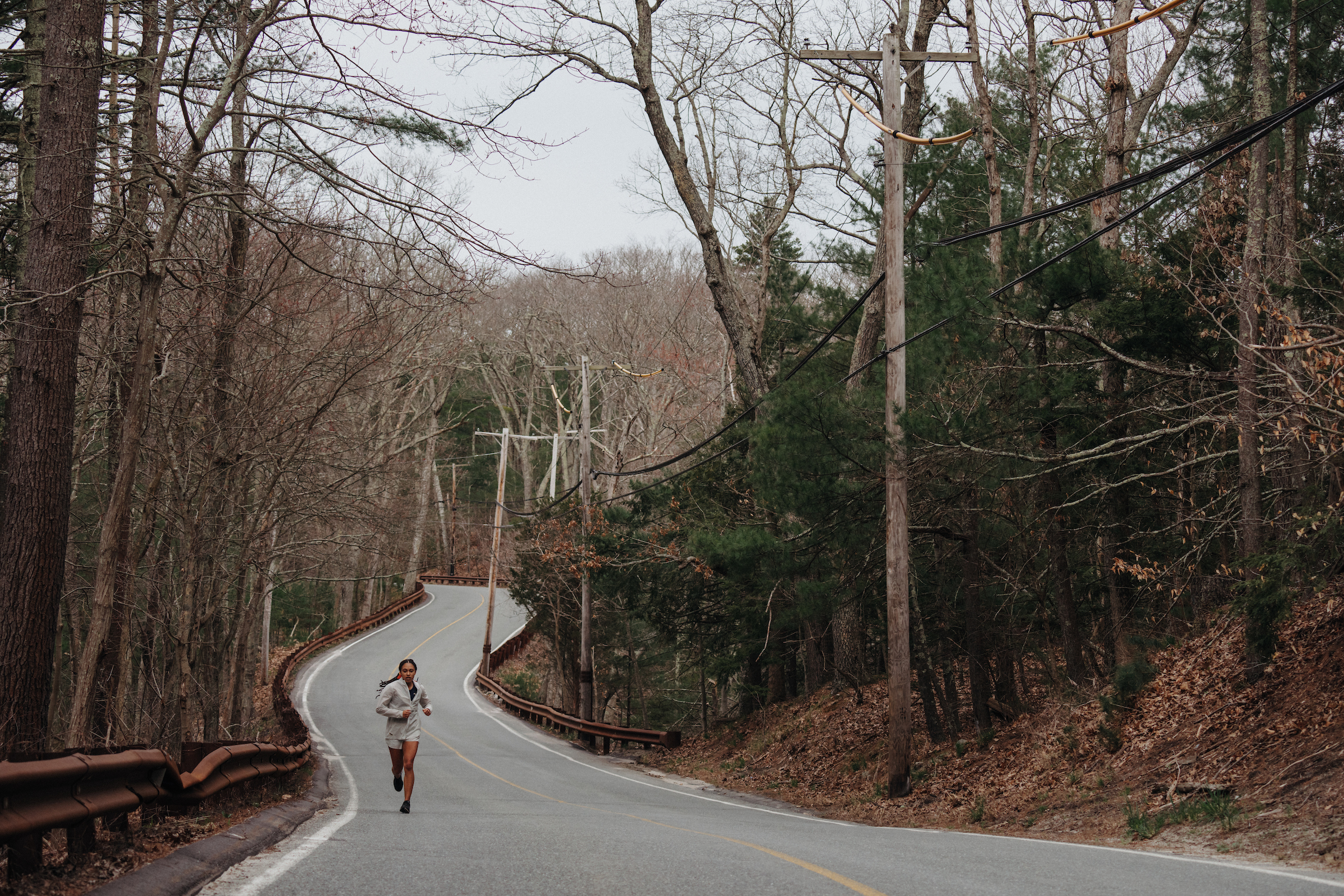
One Name at
a Time
Erica Stanley-Dottin and Madison Yerke set out to add their names to “The List” – the fewer than thirty American-born Black women to run sub-three in the marathon. They believe that through greater representation, access, mentorship, and financial support, the running industry can empower more Black American female marathoners to the front of the pack.
WORDS BY SHERIDAN WILBUR
PHOTOS BY EMILY MAYE, CHRISTIAN BRECHEIS
AND MARATHONPHOTO
IN LATE SEPTEMBER 2022, Erica Stanley-Dottin stood on the starting line before the Berlin Marathon and didn’t see many runners that looked like her. “We're always surrounded by a bunch of white dudes when you get to a certain level, right?”, says the former Georgetown University sprinter. As the clock approached 9 a.m. Stanley-Dottin awaited the gun to race her ninth marathon and proudly wore her Black Roses NYC club singlet. She had run Boston five months before, finishing just over three hours, in 3:01. That spare minute haunted the lifelong New Yorker. Still, it’s hard to believe that only five years ago Stanley-Dottin ran just for fun. Now the mother of two boys is 49. “I think for Black women particularly, we’re runners but we're also performers.”
Statistically, very few Black American-born women have ever broken three hours in the marathon. Heck, it's rare for anyone to break three hours in the marathon (only 4 percent of marathoners do), but in a majority white sport, where only 3 percent of all U.S. runners identify as Black, a Black woman going sub-3 is a rare occurrence. With a historical lack of access, mentorship and funding for Black American women, the odds are not favorable. In her recent memoir, Running While Black, writer and founder of Harlem Run, Alison Mariella Désir, posits, “While talent is distributed equally among all people, opportunity, resources and privilege are not.”
IN 2020, Aliphine Tuliamuk and Sally Kipyego, both Kenyan-born Black American athletes, took first and third in the U.S. Marathon Trials, and were rarely mentioned by even American announcers during the race. They made history as the first two Black women to represent the U.S. in the Olympic marathon but the media focused on other narratives, such as the incredible performance of Molly Seidel who came second in her first marathon (and later, became a bronze medalist at the Olympics). Tuliamuk tweeted, “I cried the first time I watched the replay. I felt uncelebrated, like I wasn't even visible. It hurt, then the 6 more times that I watched it, I got enraged.” Reporters were less interested in how she won the race, and the pride she felt at representing the USA in Tokyo, and more interested in how many siblings she had back in her home country of Kenya. Kipyego also seemed erased from the coverage even after earning her spot on the stage.
Globally, Black people have dominated the marathon: of the 100 fastest marathoners ever, 98 are Black. And of the 100 fastest women in the marathon, 85 are Black. Yet the stereotype prevails that Black American runners run fast but they don’t run far – according to the list of all-time American-born Black female marathoners, AKA “The List,” the fastest time a Black woman born in the U.S. has run is 2:34, while the American record for women is 2:18. Today, there are 26 women on The List with an age range of 25 years. This is significantly less than the number of white American women who have broken the three-hour barrier.
In early October, two weeks after Stanley-Dottin took to the streets of Berlin, Madison Yerke stood in a corral of runners before the Chicago Marathon. The former distance runner for George Washington University had never run a marathon before. She’s just 25. Yerke lives in Boston and coached herself for her debut. She took pride in simply getting to the starting line. “Getting to the starting line is as significant as making The List. Because so few of us are there,” says Yerke.
Running gives the appearance of an accessible sport, but not everyone feels empowered to run. A study in 2017 found Black Americans indicated lower than the median score on degree of welcomeness in four sports, including cross country.
According to 45% of Black respondents in another study, endurance sports like distance running and cycling proved to have barriers to entry because of a perceived lack of safety on the roads and fear of hate crimes. If America’s open roads aren’t safe enough for everyone to run on, then who runs free?
THE LIST BEGAN with a question: How many Black women have qualified for the Olympic Trials marathon? In 2013, Shawanna White, the record holder for running the most sub-3 hour marathons by Black American-born woman (at 16 marathons) asked Gary Corbitt, the son of Ted Corbitt, the first Black man to represent the U.S. in the 1952 Olympic Marathon (Helsinki). Ted passed away in 2007 but continues to make an impact in running (he won the 1954 U.S. National Marathon Championship in Yonkers, NY and the system of course measurement he devised is still in use today). Gary wanted to make an impression as well. He sought to cement Black American-born women’s history, and documented every sub 3-hour marathon performance by a Black American-born woman, finding 20, continuing to update and preserve The List list.
“We all were familiar with it obviously, but The List wasn't really it [as a goal],” says Stanley-Dottin. “The way we train and race is based on energetic feelings. We just train hard. We get out there and we see what we have, at any given day.” Though two of her teammates nearly broke three hours in the 2018 Chicago Marathon and a Black Roses teammate predicted that “every woman on this team will eventually break three," Stanley-Dottin wrote it off as hyperbole.
Then, in 2018, Black Roses hosted an event for Black History Month with Marilyn Bevans speaking, the first Black American-born woman to run sub-three, running 2:55 in the 1975 Boston Marathon. Facing prejudice and a lack of resources, Bevans was unable to compete in high school and trained with the men’s distance teams in college. She went on to become the tenth-fastest female marathoner in the world, at the time. Stanley-Dottin felt inspired by meeting her.
Then she connected to Ingrid Walters, first on social media, then in-person, who had run 2:48 to win the open division of the 2019 LA Marathon at 48.
To put this accomplishment in perspective, to place among the top 1% of marathon runners in the U.S., you would have to finish faster than 2:49. Disappointingly, a few weeks after the race, Walters found out she had an even bigger battle to fight: cancer. “That's when I became obsessed with The List. Because of the women who were on it,” says Stanley-Dottin.
THE SUMMER FOLLOWING the 2020 Marathon Trials, what Yerke calls “peak inspiration for longer distances,” she was woken up by her phone buzzing. Her longtime best friend texted her: “Did you know this?” with a link to The List from the Fast Women newsletter. “I was absolutely shocked,” she says of the fact that there were so few women listed. “Then I'm like, ‘All right Madison, all of your life experiences, leading up to this moment, it should not be a surprise. You’ve been the only one in hundreds of people in cross country races. You’ve lived it for so long and it was so normal.” In NCAA data from 2022, just 7 percent of student athletes were Black in a student-athlete population of around 15,000.
"I WAS BURNT OUT from track. From everything. I didn’t want to race. I was done with all of it and just wanted to do something else with my life,” Stanley-Dottin says of life after Georgetown. Her early dedication to sprinting – coached by the legendary Fred Thompson in high school and Ron Helmer in college – left her empty when she graduated. She ran for health and pleasure, only when she felt like it. Still, every year, she stood on the other side of the New York City Marathon course and cheered on the runners through her Prospect Heights neighborhood in Brooklyn. But when she saw a close friend training for the Marathon in 2007, “something in me switched,” she says. “It was a new challenge for myself.”
The following year, Stanley-Dottin ran the 2008 New York City Marathon with a goal to break four hours. She ran 4:06:44. She was hooked, but paused her racing ambitions to pursue her career as an event producer. She got married and had kids. Then in 2017, another friend told her about the Boston Marathon qualifying standards. “I had decided I needed to step it up if I wanted to qualify. I’m a competitive person,” she says. Running the 2018 New Jersey Marathon, a relatively flat course, Stanley-Dottin earned a Boston qualifier, or BQ, with a time of 3:44. But she wanted to elevate herself to her potential.
“I found my people,” she says about Black Roses, a NYC-based running club for men and women. “Obviously that’s changed everything for me.” The team doesn’t have set workout days because they communicate daily to accommodate everyone's busy schedules. As the mother of two young boys, and working a full time job at Tracksmith building community events in New York City, Stanley-Dottin can fit training around her life, inspiring other women while setting an example to her kids too.
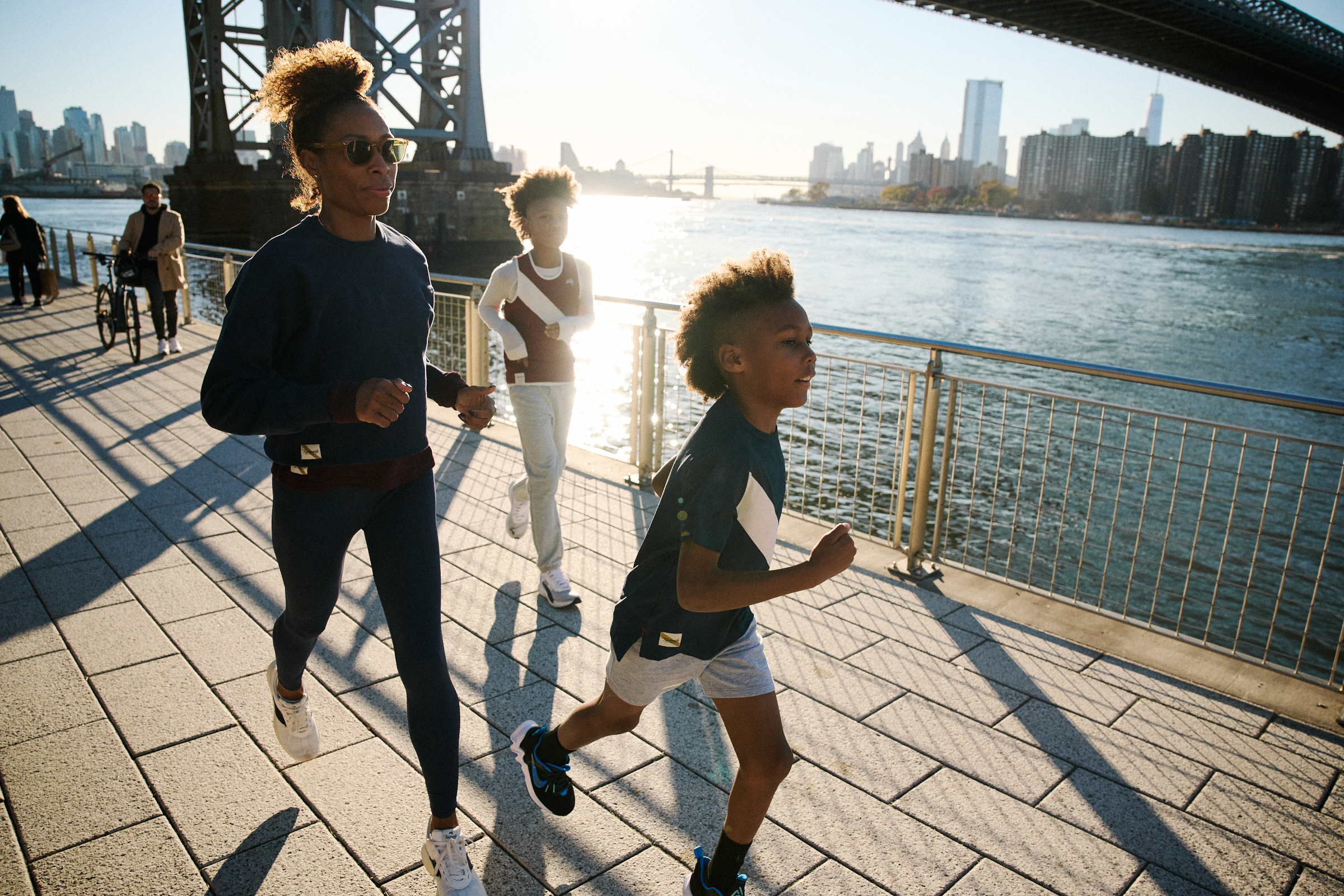
YERKE LOVED LONG DISTANCE running since middle school and adopted it as a year-round hobby when she was told it would take a three-season commitment to be great. “I’m not gonna be happy in a mile,” she jokes. She credits her high school coach Fitz Read for encouraging her long-distance running pursuit. “I know for a fact starting in middle school definitely shaped me versus starting as an adult. I started that love so young. Getting that mentorship and having more people early on, at any skill level, is huge,” she says. “I still never want to disappoint [Read], even as an adult.” Yerke went on to run all three seasons Division-I at George Washington University, coached by Terry Weir, who she considers another mentor, and for two years, Chelsea France, a Black woman who now is the head coach at Colgate University. “She was an influential part in the recruiting process for me to have leadership that looked like me and understood, but at the same time this wasn’t the only reason I chose my school.” Yerke's coaches shaped her relationship to the sport: “After I graduated, I had a sense that I wanted to keep running. As a lifelong thing,” she says. “I was burnt out on racing, but I wasn’t burnt out on running.”
It wasn't until 2004 when National Black Marathoners Association was founded, followed by Black Girls Run in 2009, adding more opportunities for Black running clubs in the U.S. Today, Stanley-Dottin says, “You can literally find your people if you're looking for it.” Leading up to Berlin, Stanley-Dottin ran with Black Roses usually three times a week, either at McCarran track or Prospect Park. “We promote the collective in my group. It's not about any one person at any given time. We know that all of us have done this together.” She had increased her mileage since the pandemic, cranking out 70-80 mile weeks, having fun with teammates by her side. “Running with people, and having a group for support is a game changer,” she says to Yerke. Stanley-Dottin asks again, “You really don’t have a coach at all now?”
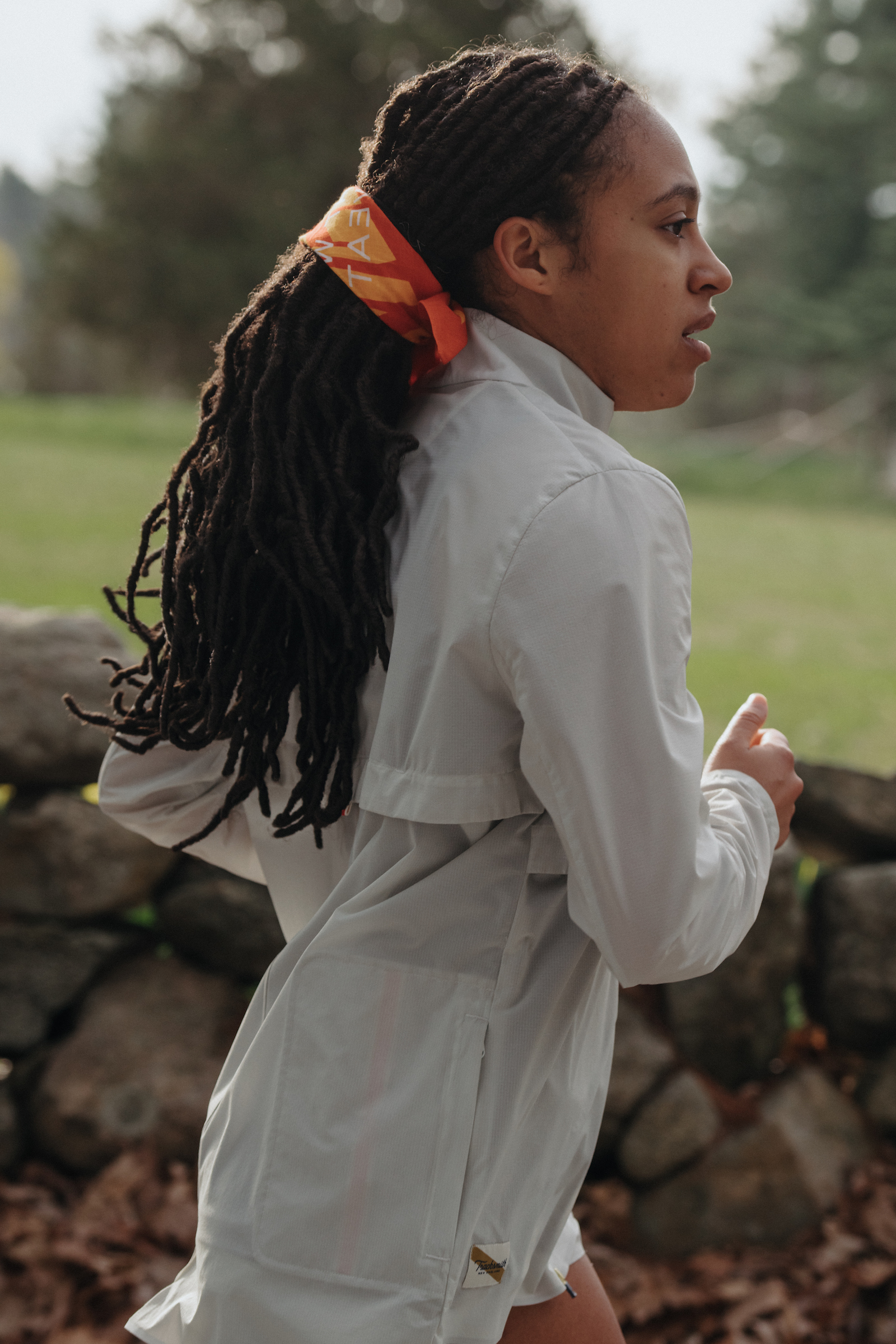
THERE IS AN ABUNDANCE of community support in Boston, known as one of the best cities to run and home of the Boston Marathon, the world's oldest annual marathon and one of the most prestigious road racing events – but historically, the city wasn't a welcoming place to Black people. Jim Crow originated in Massachusetts, and Boston was a hotbed of racially-charged class conflict between lower and middle-class Irish and middle-class Black communities. Running communities aren’t a panacea, but they offer a way to foster unity against Boston’s checkered history and provide a place for social change.
“I was cold DMing and showing up to run clubs, hoping that I made friends or something stuck,” Yerke says about her move to Boston in 2019. She quickly fell into step with the Tracksmith racing team, as it was known before it was the Boston Hares and just had a few people. “Now they have over 200 people. Which is super cool how much it has grown,” she says. The team doesn’t have an official coach which suits Yerke. “I feel like with a coach sometimes, I put too much pressure on myself when I'm literally just like an adult running for fun.” But she has grown her number of training partners beyond the team, and links up with local marathon and post-collegiate runners. “I’ll just go where the wind takes me,” Yerke says, who works as a freelance social strategist for CNN. Her lightheartedness isn’t to be confused with light training: she ran around 80 miles a week leading up to Chicago. “It was something I knew in the back of my head,” she says about The List. “But I just wanted to be the best that I could be.”
ON RACE DAY in Berlin, Stanley-Dottin wasn’t focused on times. She raced in the moment, without any dramatic flairs and clicked off her splits in a military fashion. When she got close to the line, her coach was there to greet her and they both started crying. Stanley-Dottin finished the race with a time of 2:52 and became the 25th Black American-born woman to run a sub-3 hour marathon. “I've met so many people who are inspired and feel like they can do it,” says Stanley-Dottin, representing women of color, mothers and women in their forties. “That's the thing. They're watching it, they're seeing it. That's huge to me.”
On many levels running is a meritocracy: you get out what you put in, and if you work hard and train right, you will be rewarded with a PR. Yet marathons like Berlin or Chicago can be as expensive as $250 just to enter. That’s before factoring in flights, hotels, food, and Ubers. “There used to be that saying that in running, ‘You just need shoes and you're good to go.’ Now, in actuality it's like no, you need racing shoes, workout shoes and training shoes. You need the right gear. It's definitely not a sport where you can just start with nothing,” says Yerke, who humbly acknowledges she doesn’t know the answer to the monetary burden of marathons, but suggests scholarships or income driven payment plans to elevate more runners of color into competition. “You need the tools like any other sport.”
On October 9th, a few weeks after Berlin, Yerke ran Chicago to complete her first marathon. She learned a lot from the race but most importantly, she enjoyed the experience. “It was so great, with so many people the entire way,” Yerke says to Stanley-Dottin. “There was never one moment where I was alone and really down on myself because there was so much going on.” In the process of having fun, she added one more name to The List, running 2:48 and became the 26th Black American-born woman to run a sub-3 hour marathon.
IT DOESN'T END with The List. Black American women, like any other demographic running marathons, aren’t a monolith. “The stories are just as important as the names on there. I feel like they need to be told, just like every other one,” says Stanley-Dottin. “Black women are never seen as performers [in the marathon] – especially American Black women.” She and Yerke aren’t speaking for all elite Black American marathoners yet at the same time, they have roots in their Brooklyn and Boston communities. It would be reductive to think of The List as a solution to the lack of representation for Black Americans in competitive distance running. But Corbit’s list matters because more women can see runners like them represented, who believe they can race marathons too. For Stanley-Dottin and Yerke to not just participate, but to compete, is disruptive to the traditional Americana model of marathoning.
“It's definitely groundbreaking now, but in the future I hope that The List is just so long that you’re like, ‘Oh yeah, right. Of course.’ I love it and I hate it,” says Yerke. She and Stanley-Dottin are focused on the day when The List isn’t such a big deal. Stanley-Dottin emphasizes it’s not necessarily about making The List, it’s about performance. “How far can we take it? How fast can we run? We're training hard. We're able to compete on the same level.”
